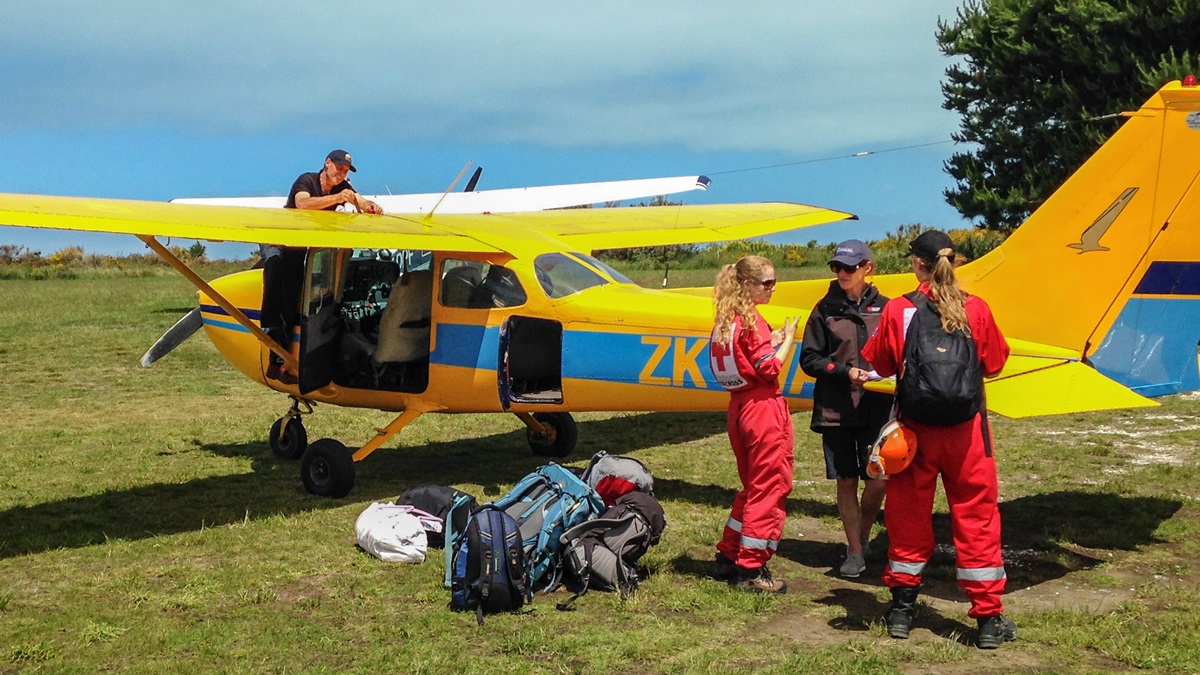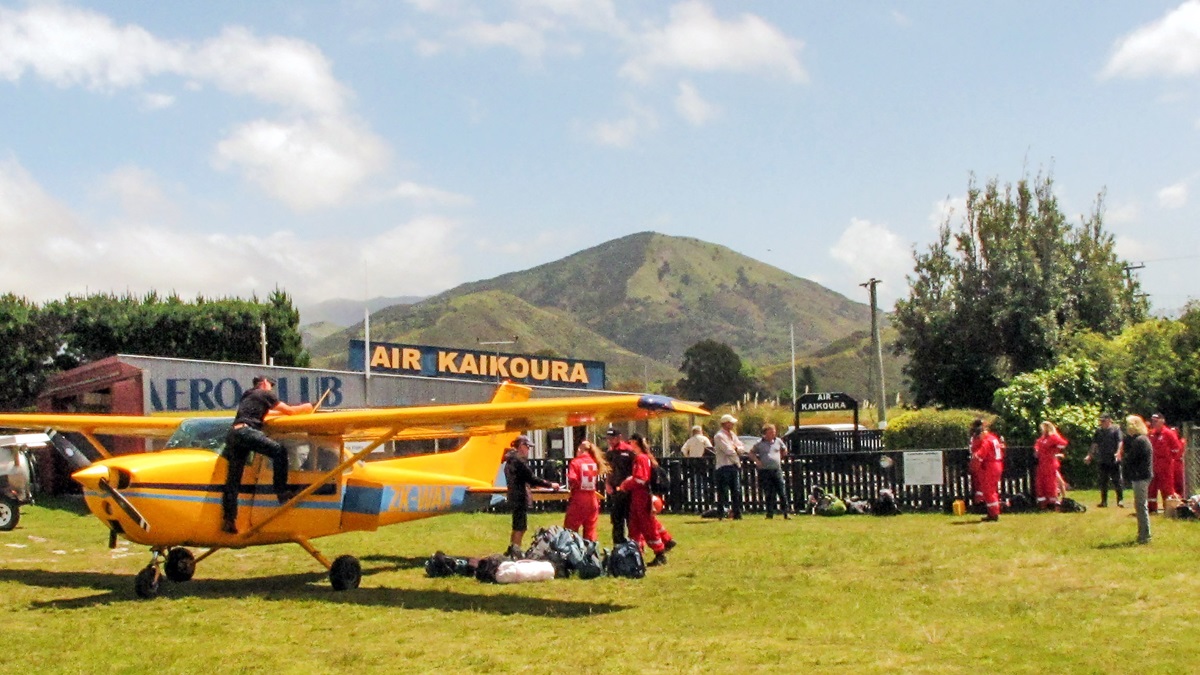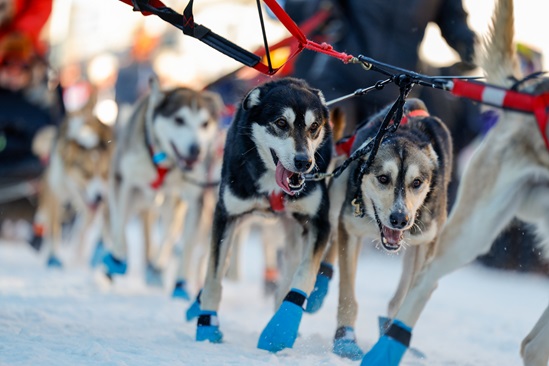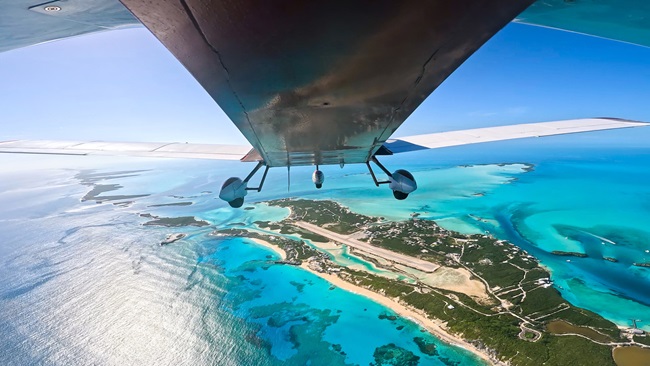Pilot on vacation aids in disaster relief
Glimpse into how GA pilots in New Zealand rally to help others
What started as a flying vacation in New Zealand turned into an eye-opening experience for Laurel Lippert and her husband after an earthquake on another part of the island necessitated the help of general aviation pilots. Lippert shares how pilots in New Zealand rallied to provide aid and how a similar response would be desired for natural disasters that strike in the United States.
It would have been easy that November day to fly around for fun and see more of New Zealand’s breathtaking terrain from the air, but our hosts, Matt and Jo McCaughan, owners of Flyinn New Zealand and Geordie Hill Station, a 5,000-acre sheep farm in the South Island, knew what was most important: supporting the relief effort in the wake of a 7.8-magnitude earthquake that struck nearby Kaikoura.
On the morning of Nov. 15, 2016, when New Zealand residents learned of the earthquake, many thought of the devastation at Christchurch, a city 115 miles south of Kaikoura that is also on the east coast, where a 6.3-magnitude earthquake had struck five years earlier, killing 185 people. But, unlike Christchurch, the Kaikoura quake happened about midnight when few people were on the roads.
Approaching Kaikoura five days later in ZK-WAX, the McCaughans’ Cessna 172, we saw huge landslides covering the railroad tracks and State Highway 1, a strategic national two-lane highway that runs the length of the South Island and provides Kaikoura’s land access to the outside world.
Four naval ships, one each from New Zealand, the United States, Australia, and Canada, were nearby in Auckland to commemorate the New Zealand Navy’s seventy-fifth anniversary when the earthquake hit. The ships couldn’t dock at Kaikoura because there is no port, but militaries offered assistance by delivering disaster supplies via helicopter and transporting tourists and residents who needed to be airlifted.
The McCaughans and other pilots immediately thought of providing aid by air. Within a short time of the news, Matt was contacted by James Turner of Angel Flight New Zealand, who began coordinating and alerting general aviation pilots who wanted to help, most of whom were AOPA New Zealand members.
Thanks to the internet and access to cell phones, volunteers had access to current information. Within a short time, Turner had cleared procedures and communication for flying into the restricted area that surrounded Kaikoura with the controlling authority. Generally, pilots announce their intentions when flying in the mandatory broadcasting zone near Kaikoura although the frequency is unattended. In this case, Kaikoura Radio was established to respond to position and intention announcements with the ability to give traffic and routing advice.
Matt said that there could be many small aircraft in the area, but the radio transmission we heard from the controller was simply, “Keep your eyes open.” When we landed at Kaikoura Aerodrome on its 2,297-foot-long by 33-foot-wide sealed (paved) runway, there were a half a dozen other airplanes on the field and clusters of exhausted Red Cross workers in their red jumpsuits waiting to depart in staff rotation.
Matt’s job would be to fly two young Red Cross volunteers 83 miles south to Rangiora Aerdrome. While he was putting them and their gear into the Cessna 172, Jo, my husband Tom, and I took the three large bags of groceries and other necessities we had brought and hitched a ride to the distribution center in town.
In the process, we met people who were willing to share their stories and were outwardly grateful for our effort, which soon seemed very minor compared to the future these residents faced with disrupted lives, a seriously damaged infrastructure, and limited access out of the area for months to come.
We caught a ride from town back to the airport and met Paul Hood, owner of a T-182 Cessna who lives in a nearby town, and heard his story. He soon invited us to fly over and stay with him, which was another, not surprising, offer common from Kiwis.
Soon after Matt returned, he was asked to deliver two more large bags of gear to Rangiora Airport en route home to Geordie Hill Station. A few hours later back at the sheep farm, Matt learned that volunteers had hauled 25 people and 2.5 tons of supplies to and from the Kaikoura airport in two days.
Seven pilots had participated in that relief effort, flying in two Cessna 185s, a Cessna 182, two Piper Cherokees, a Piper Comanche, and the McCaughans’ Cessna 172. Volunteer offers continued, and later we learned that Ray Stark, owner of FlyStark charter company in the North Island, sent one of his pilots in the company’s single-engine eight-place Airvan to Kaikoura for a week to help.
It was a once-in-a-lifetime experience, one might say—witnessing firsthand the effects of the fifth largest earthquake in the world in 2016. It may not be the last time for anyone in New Zealand though, as that country has earthquake faults similar to California’s that could become active at any time.
For those of us who live in Truckee, California, a tourist town in the Sierra Nevada, we also could be isolated by an earthquake if it was strong enough to damage Interstate 80, our access to Sacramento and Reno, as well as secondary roads lined by hillsides with slide potential.
Our rescue could come from Truckee Tahoe Airport. There is no doubt that local pilots would eagerly offer themselves and their aircraft to fly people and goods. After seeing what general aviation pilots did in Kaikoura, I am proud to be a pilot myself and own an airplane that I would gladly share for a good cause.
Reading news stories about the Kaikoura earthquake relief effort, rarely is any mention made of the GA pilots and their aircraft. Not surprisingly, bigger military aircraft get all the attention. But, most pilots don’t care if they are interviewed or honored. We know how lucky we are to have embraced aviation in our lifetimes, and that being able to fly is a unique privilege that we can use to benefit others.—By Laurel Lippert.







